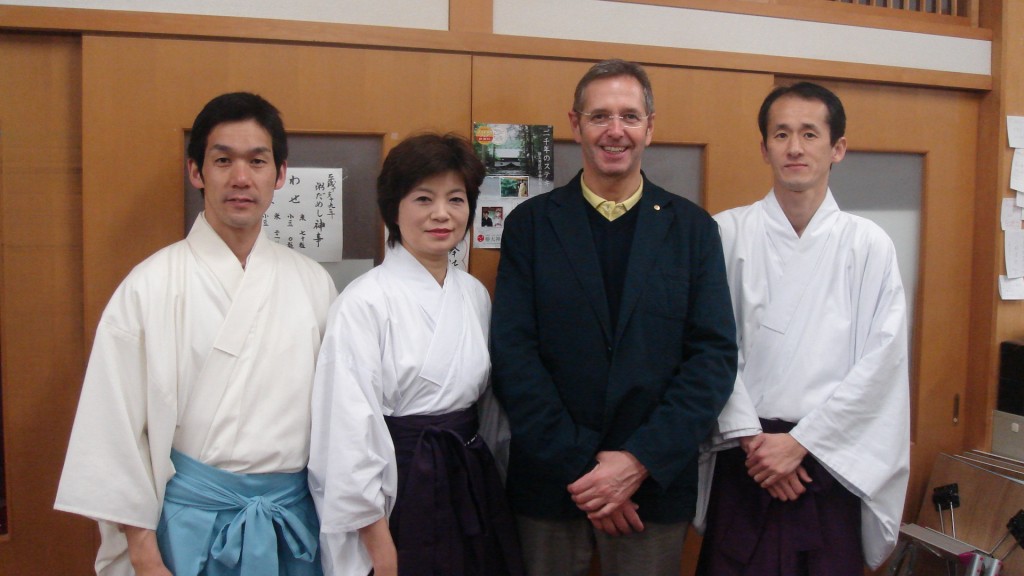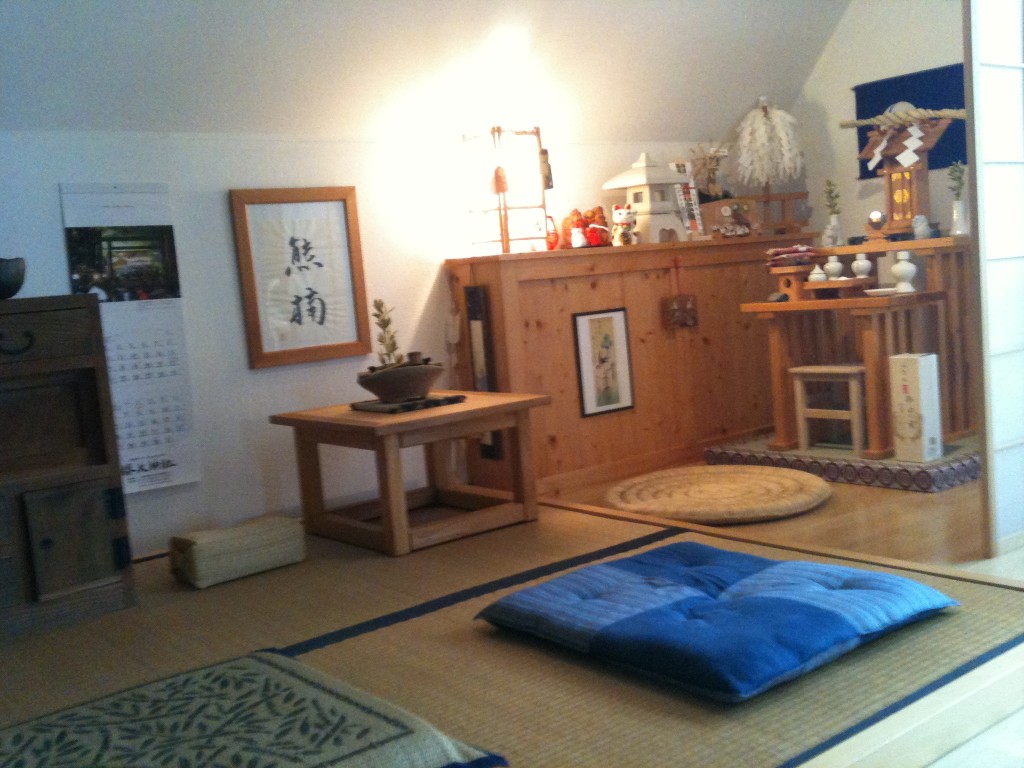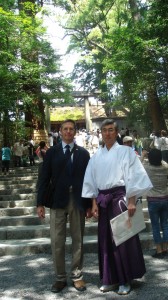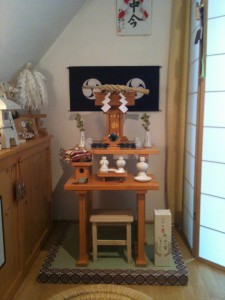A question that often comes up in the spread of Shinto overseas is how can people be a Shintoist when they have little or no access to a shrine. One person who considers himself a Shintoist despite living in southern Germany is classical conductor, Douglas Bostok. A frequent visitor to Japan, Douglas has set up his own altar at home, as you can see in the pictures.
Below Douglas explains how he came to Shinto, and how he practises it in his daily life.

Douglas Bostok with shrine personnel in the office of Tsubaki Shrine
I first went to japan in 1994 and was immediately impressed by the shrines i saw and the feeling i had of being at them. In the years following I wished to deepen my knowledge and was introduced to Jinja Honcho – the shrine association in Tokyo. I met many kannushi – shinto priests. i was recommended to contact the Tsubaki Shrine inMie Prefecture, because many priests spoke English and had contact with the Tsubaki Shrine in the USA.
When I went there, I met guji (chief priest) Yamamoto, father-in-law of the current head priest. The impression he made on me is a lasting one. i have been a member of that shrine since, with many friends there and visits each year for misogi (water ascetism). The head priest and many others have often visited my concerts and a deep relationship has evolved. Each New Year i receive omomori (amulets), ofuda (talisman) and other things to renew my kamidana and accompany my friends, family and myself during the year.
Tsubaki Daijinja has two main shrines, one dedicated to Sarutahiko Omikami and one to his wife Ame-no uzume-no mikoto, the deity of dance and the arts in general. As a professional conductor this is most fortuitous. The geijutsu-no omamori (arts charm) is always with me and receives special attention with a brief prayer to Uzume before all my concerts.
Apart from that i have visited many (by now hundreds) of shrines throughout Japan, often including parts not usually open to the public, taken part in many ceremonies and religious services, and made contact with numerous priests. i have collected artifacts from many of these shrines as well as receiving numerous presents from their staff. At home i have an extensive collection of books on Shinto – most of the ones published in English, i guess, as well as norito (prayers), Kojiki and other works. Just at this moment I am reading a new book: A New History of Shinto. Fascinating!
Recently i visited Kokugakuin University in Tokyo where shinto priests study. A kannushi friend of mine who used to be a staff member of Jinja Honcho is now a teacher there.

Douglas Bostok's home altar
The items at my kamidana were acquired at various shrines and shops throughout Japan – not least Tsubaki Daijinja. The kamidana was blessed by a priest friend, Masatsugu Okutani a few years ago. I have a host more items and memorabilia apart from what can be seen in the photos.
The spirit of kami-no michi (way of the kami) accompanies me through my whole life and being, mainly in a quiet, supporting way. A shrine in Europe is a dream. A symphony concert in the shrine grounds at Tsubaki is a concrete plan i am working on currently.
(You can get information about Douglas’s professional life on his website, here.)



Leave a Reply